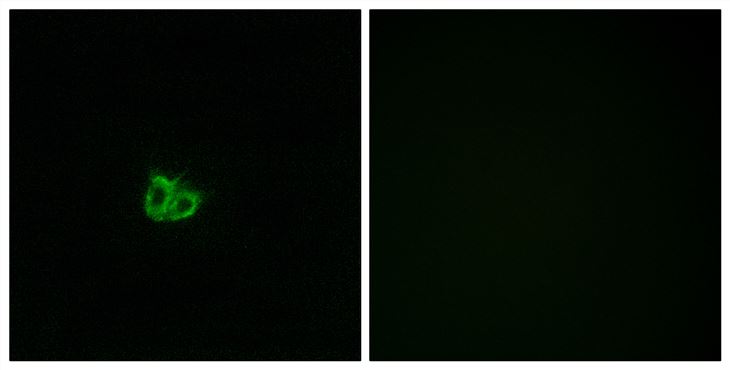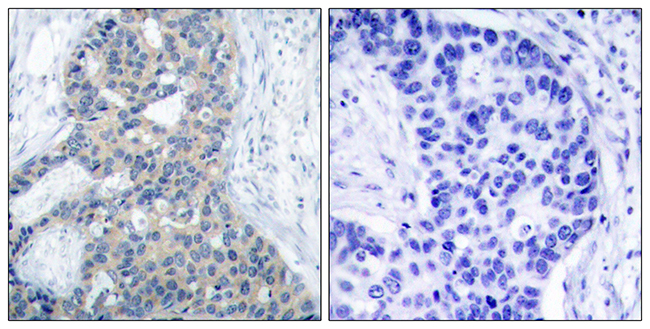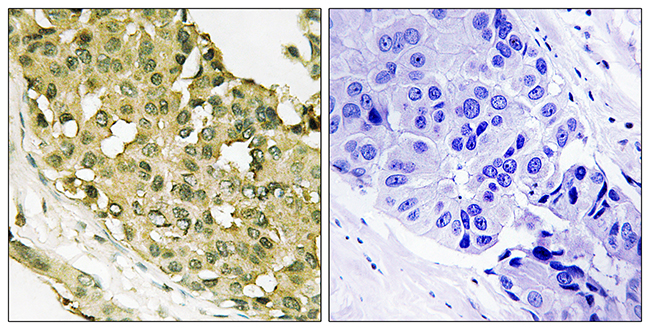Effectiveness of local injection of lentivirus-delivered stathmin1 and stathmin1 shRNA in human gastric cancer xenograft mouse
JOURNAL OF GASTROENTEROLOGY AND HEPATOLOGY
Authors: Akhtar, Javed; Wang, Zhou; Yu, Che; Zhang, Zhi Ping
Abstract
Background and Aim: We have reported previously that RNA interference targeting stathmin1 (STMN1) gene in human gastric cancer cells inhibits proliferation in vitro and tumor growth in vivo. Based on these observations, in the present study, the possibility that local injection of lentivirus-delivered stathmin shRNA would induce regression of the established human gastric cancer xenograft in animal model was investigated. Methods: BALB/c nude mice were inoculated subcutaneously into the right armpit with human gastric cancer cells SGC-7901(2 x 106 cells in 200 mu L phosphate-buffered saline) to develop a xenograft model of human gastric cancer. When tumor reached suitable size, mice were randomly divided into two groups. STMN1 shRNA group (n = 6) were given local injection of lentivirus-delivered STMN1 shRNA, and the non-silencing shRNA group (n = 6) were administered with local injection of lentivirus-delivered non-silencing shRNA. Quantitative reverse transcription-polymerase chain reaction and Western blot were used to verify the knockdown of the gene expression in dissected tumor at mRNA and protein level, respectively. Results: Experimental therapy on the nude mice model bearing subcutaneous tumor of SGC-7901 cells showed that local administration of STMN1 shRNA effectively regressed the pre-established tumors. Stathmin shRNA-treated tumors were significantly regressed as compared with that of the tumor injected with non-silencing shRNA (P < 0.05). Tumor weight was significantly decreased in STMN1-treated group as compared with non-silencing shRNA group (P < 0.05). Quantitative reverse transcription-polymerase chain reaction and Western blot showed downregulation of STMN1 gene expression in STMN1 shRNA group as compared with non-silencing shRNA group (P < 0.05). Conclusion: These findings highlight the potential use of local injection of lentivirus-delivered shRNA for the treatment of early localized human gastric carcinoma.
Genomewide Gene Expression Profiles of HPV-Positive and HPV-Negative Oropharyngeal Cancer Potential Implications for Treatment Choices
ARCHIVES OF OTOLARYNGOLOGY-HEAD & NECK SURGERY
Authors: Lohavanichbutr, Pawadee; Houck, John; Fan, Wenhong; Yueh, Bevan; Mendez, Eduardo; Futran, Neal; Doody, David R.; Upton, Melissa P.; Farwell, D. Gregory; Schwartz, Stephen M.; Zhao, Lue Ping; Chen, Chu
Abstract
Objective: To study the difference in gene expression between human papillomavirus (HPV)-positive and HPV-negative oral cavity and oropharyngeal squamous cell carcinoma (OSCC). Design: We used Affymetrix U133 plus 2.0 arrays to examine gene expression profiles of OSCC and normal oral tissue. The HPV DNA was detected using polymerase chain reaction followed by the Roche LINEAR ARRAY HPV Genotyping Test, and the differentially expressed genes were analyzed to examine their potential biological roles using the Ingenuity Pathway Analysis Software, version 5.0. Setting: Three medical centers affiliated with the University of Washington. Patients: A total of 119 patients with primary OSCC and 35 patients without cancer, all of whom were treated at the setting institutions, provided tissues samples for the study. Results: Human papillomavirus DNA was found in 41 of 119 tumors (34.5%) and 2 of 35 normal tissue samples (5.7%); 39 of the 43 HPV specimens were HPV-16. A higher prevalence of HPV DNA was found in oropharyngeal cancer (23 of 31) than in oral cavity cancer (18 of 88). We found no significant difference in gene expression between HPV-positive and HPV-negative oral cavity cancer but found 446 probe sets (347 known genes) differentially expressed in HPV-positive oropharyngeal cancer than in HPV-negative oropharyngeal cancer. The most prominent functions of these genes are DNA replication, DNA repair, and cell cycling. Some genes differentially expressed between HPV-positive and HPV-negative oropharyngeal cancer (eg, TYMS, STMN1, CCND1, and RBBP4) are involved in chemotherapy or radiation sensitivity. Conclusion: These results suggest that differences in the biology of HPV-positive and HPV-negative oropharyngeal cancer may have implications for the management of patients with these different tumors.
![]()


